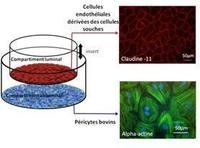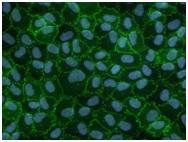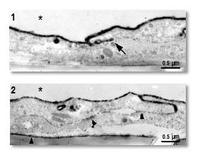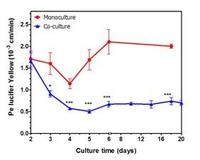Our objective : set-up and optimize in vitro models of the blood-brain barrier (BBB) to investigate the physiology of this barrier and drug delivery.
Since the early 90s, we have developed relevant and reiable in vitro models of the BBB using bovine (Dehouck et al., 1992) and mouse brain capillary cells (Coisne et al., 2005).
More recently, we have developed a human BBB model based on the use of hematopoietic stem cells. Please contact Pr. Fabien Gosselet for more information and for discussing the possibility to use this model in your own laboratory.
Briefly, this model consists to purify these hematopoietic stem cells from human umbilical cord blood. Among the cells contained into the buffy coat, we isolate the CD34+ cells that we subsequently differentiate into endothelial cells as previously published ( Pedroso et al., 2011). These cells are then seeded on an insert and co-cultivated during 6 days with brain pericytes ( Cecchelli et al., 2014). This model is then named Brain-like endothelial cells (BLECs) and possesses major features of the BBB displayed in vivo.

|
| The human BLECs model (Cecchelli et al., 2014) |

|
| Endothelial cells derived from CD34+ cells form a cell monolayer when observed by classical microscope. |

|
| Claudine-5 (___ (bar=50µm)). Fluorescent immunolabelling of the claudin-5 protein localized at the tight junctions of the BLECs model. |

|
| When CD34+-derived endothelial cells are incubated 6 days with brain pericytes, the tight junction impede the paracellular passage of Soy Lectin across 2 adjacent BLECs (picture n°1). On the contrary, when cells are cultivated alone, they do not form tight junction structures and Soy Lectin is able to reach the matrigel coating (Picture n°2).
(We are very grateful to Rustem Uzbekov and Brigitte Arbeille, from Université François Rabelais, Tours, for the pictures) |

|
| In blue, the CD34+-derived endothelial cells are cultivated with brain pericytes. Very quickly, the permeability of the small tracer lucifer yellow decrease to reach almost 0.6 x 10-3 cm/min. This model is stable for at least 20 days. |